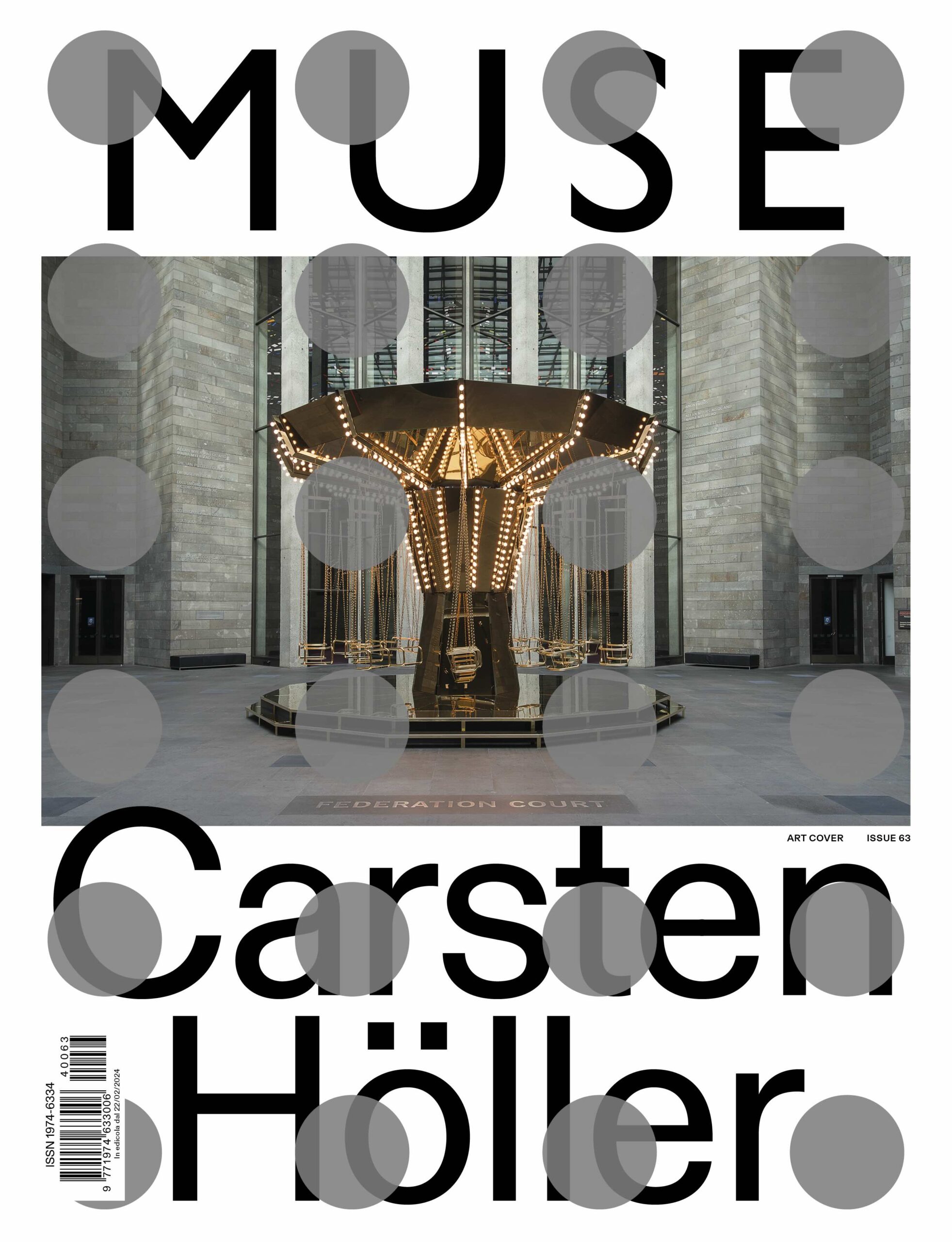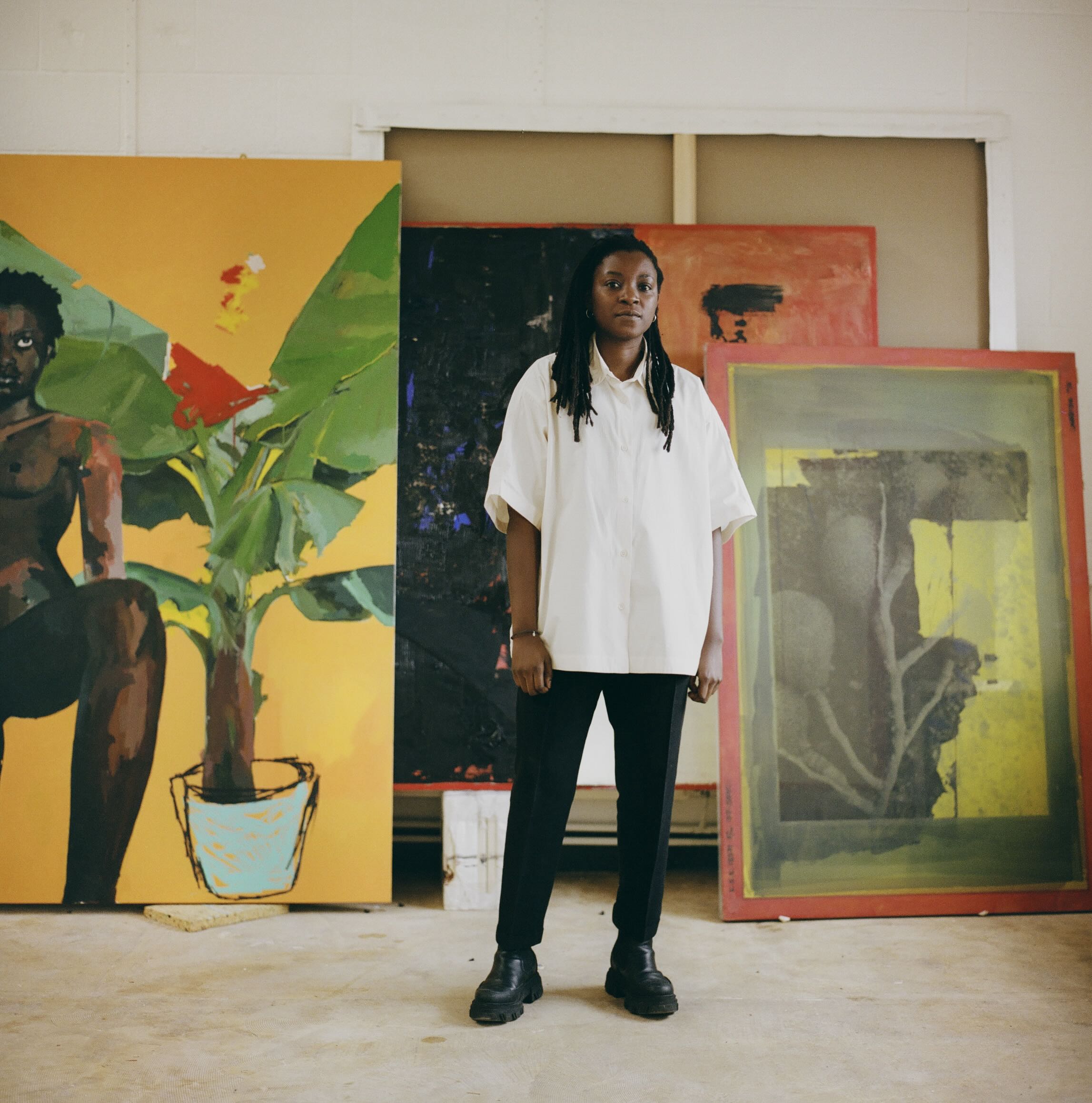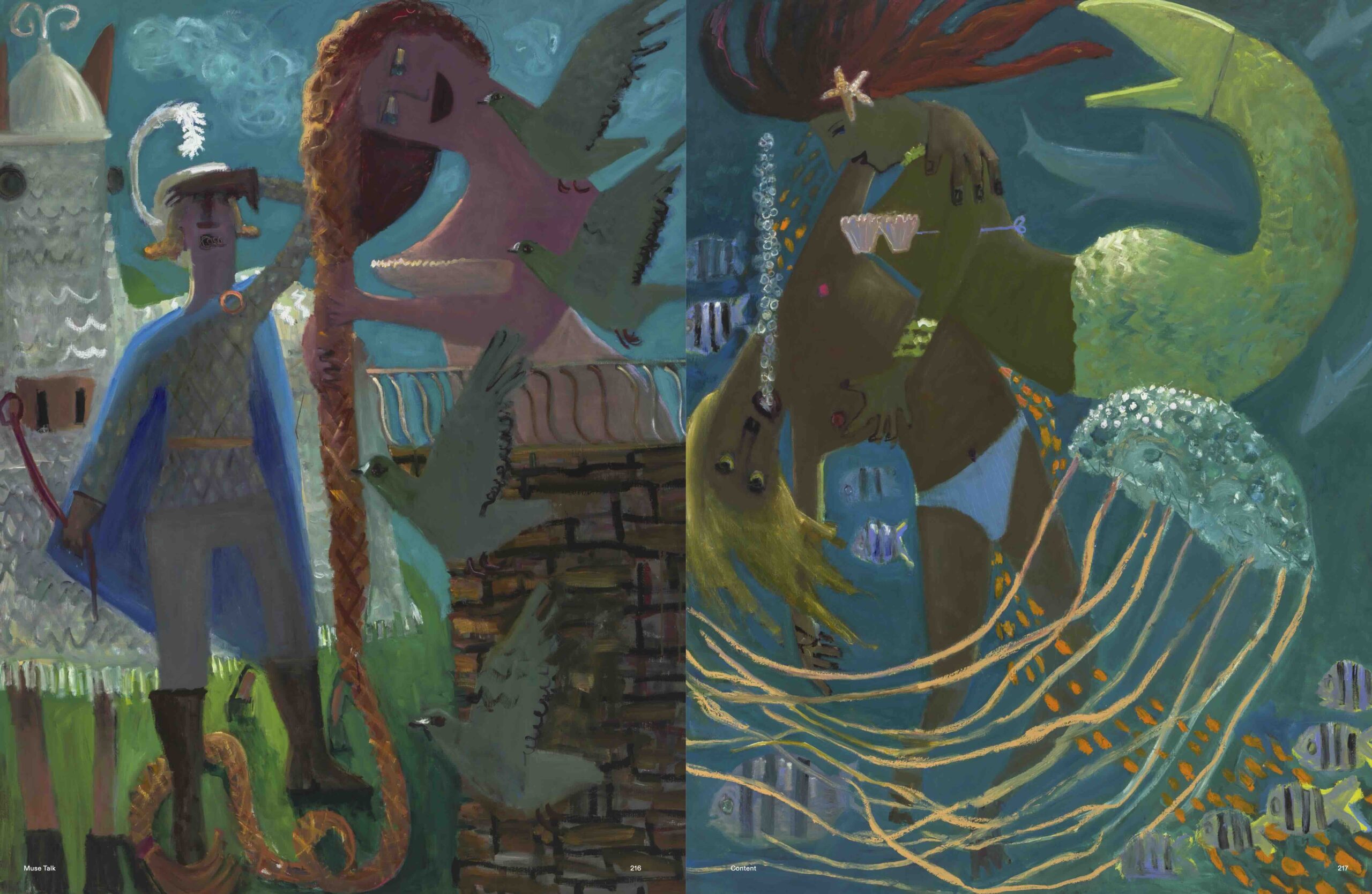Hans Ulrich Obrist in conversation with Carsten Höller
HUO Today is Sunday. What did you do today?
CH I’m in Italy. I’m here with Kajsa Leander, my Lebenspartner, and we bought a farm together, where we went today. I’ve always wanted to have a farm. I’ve never had a studio in my whole life and this farm should be like an extended studio of sorts, while being a private place at the same time. A place for experimentation, in all senses, but I’m not sure yet exactly what kind of experiments it will be.
HUO This is the first time you have such a place.
CH In Ghana I have a place too, but it’s less a farm than a piece of wilderness, coastal thicket as it’s called, which I bought together with my friend the artist Marcel Odenbach. We built a house there which was ready in 2009.
HUO How did you come to the house in Ghana? You were really working as an architect there.
CH Yes, we did it together, Marcel and I. We sat in a nearby hotel and thought, “We could build a house up on that hill over there”. And we eventually did. It’s not in a nature reserve or anything, it was farm-bush, a landscape that has been shaped by slash-and-burn agriculture. That’s how they do it there, the bush is cut, burnt, and the ashes serve as fertiliser for cassava or corn crops, before the bush is allowed to grow again. So, we thought that was okay to build there, as it was certainly not pristine nature. In principle, I think one shouldn’t build a house without tearing down one before, at the same place. But in this case we compensated by letting the bush grow on the land we bought. Now its a tall thicket with some trees, and there a quite a few bird and mammal species that colonised this new habitat which weren’t there before. Here in Italy, we are also building a house, but we are constructing the house along with other buildings at the same places of other already existing buildings which we are about to tear down. There are enough houses on this earth; you fly in a plane, look down, and think that it’s crazy how people have spread, and how many buildings have been erected. I think it’s important when you do such projects to think about it. And what was the question about Ghana?
HUO How did the house come about, I don’t even remember exactly how it came about that you with Marcel Odenbach built it. I’m going there for the first time next year, I haven’t seen it yet.
CH Yes, we’ll see each other there. I invite you to my house, you have to come there. The house is fantastic for two dilettantes who built it, if I may say. Every time I’m there, I think, ”Wow, we did this?” The house is built on stilts, and it’s designed in such a way that there are no right angles – everything is either 93 or 87 degrees. That gives the whole thing a special shift, which also leads to a kind of optical distortion, so that the stairs, for example, seem longer or shorter than they are. The stilts don’t seem to be parallel – they aren’t – and they also seem to be not vertical – but they are. The whole house has a kind of dynamism through this slight change; it looks like it could run away at night, also because of the stilts.
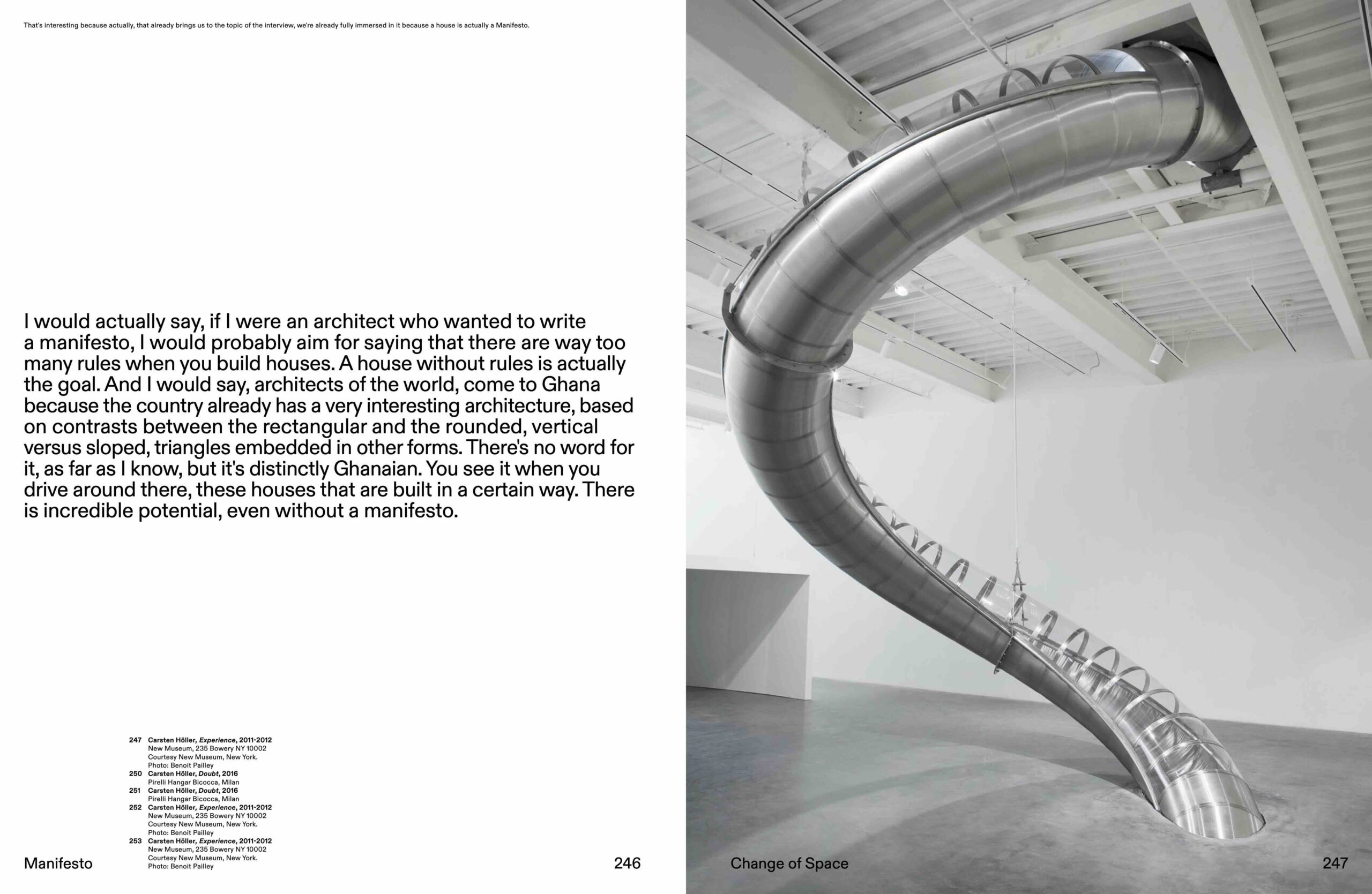
HUO That’s interesting because actually, that already brings us to the topic of the interview, we’re already ful- ly immersed in it because a house is actually a Manifesto. There are many architectural manifestos, from Adolf Loos’ The Principle of Cladding to Bruno Taut’s Down with Seriousism! Mies van der Rohe also had various manifestos or working theses, as he called them, or like out of With Infinite Slowness Arises the Great Form. Lina Bo Bardi’s Stones Against Diamonds is one of my favorite.
CH But a house is also about you, it’s a portrait based on practical considerations. In this case, it’s that you want to have a draft to avoid it being too warm and that you don’t need air conditioning. You don’t want snakes in the house necessarily, and as few mosquitoes as possible. And then you just think, “We’ll build it on stilts”. But as a dilettante, you don’t know what problems building a house on stilts entails. It requires an enormous foundation, amongst other things. We didn’t know how the ground was, if it was solid or not. And that freedom you have, where you think, “let’s just do it”, maybe that’s only possible in places like Ghana because there are no building regulations there, at least there weren’t back then. Or maybe we just didn’t know, that could also be. You can just build whatever you want. We don’t have an address. You can’t send us anything. We built the road ourselves to get there, so in that sense, it’s a paradise for an architect. I would actually say, if I were an architect who wanted to write a manifesto, I would probably aim for saying that there are way too many rules when you build houses. A house without rules is actually the goal. And I would say, architects of the world, come to Ghana because the country already has a very interesting architecture, based on contrasts between the rectangular and the rounded, vertical versus sloped, triangles embedded in other forms. There’s no word for it, as far as I know, but it’s distinctly Ghanaian. You see it when you drive around there, these houses that are built in a certain way. There is incredible potential, even without a manifesto.
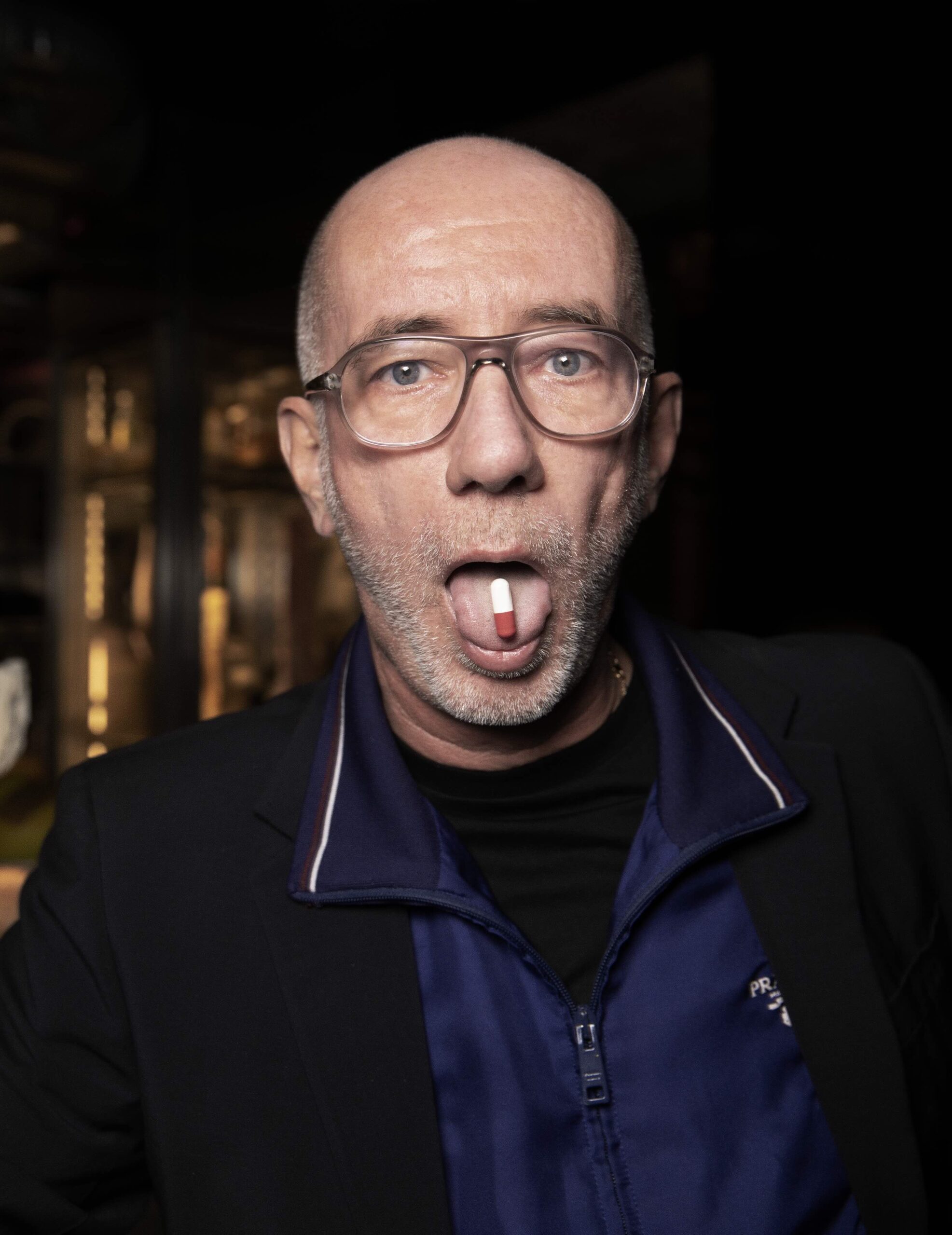
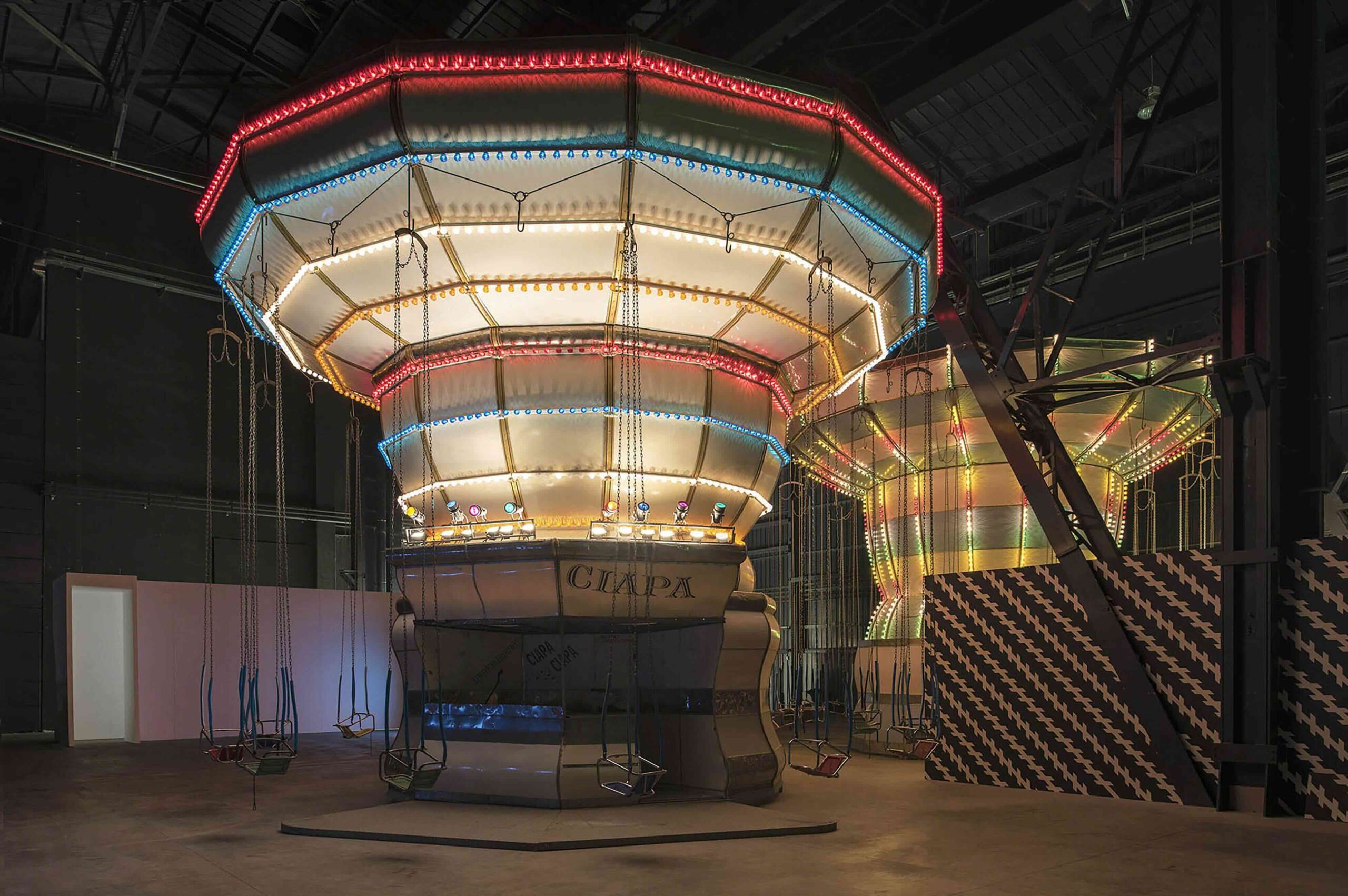
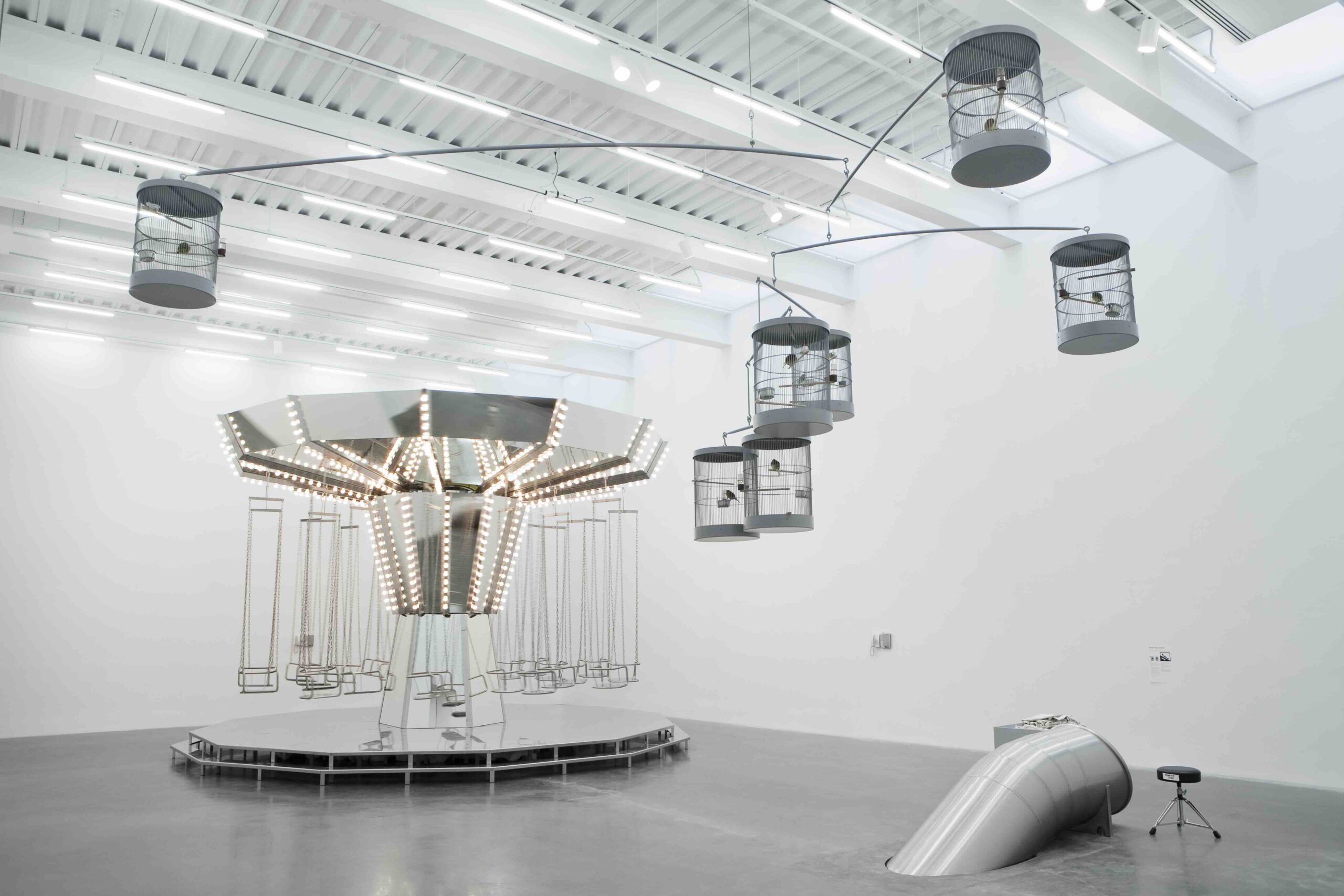
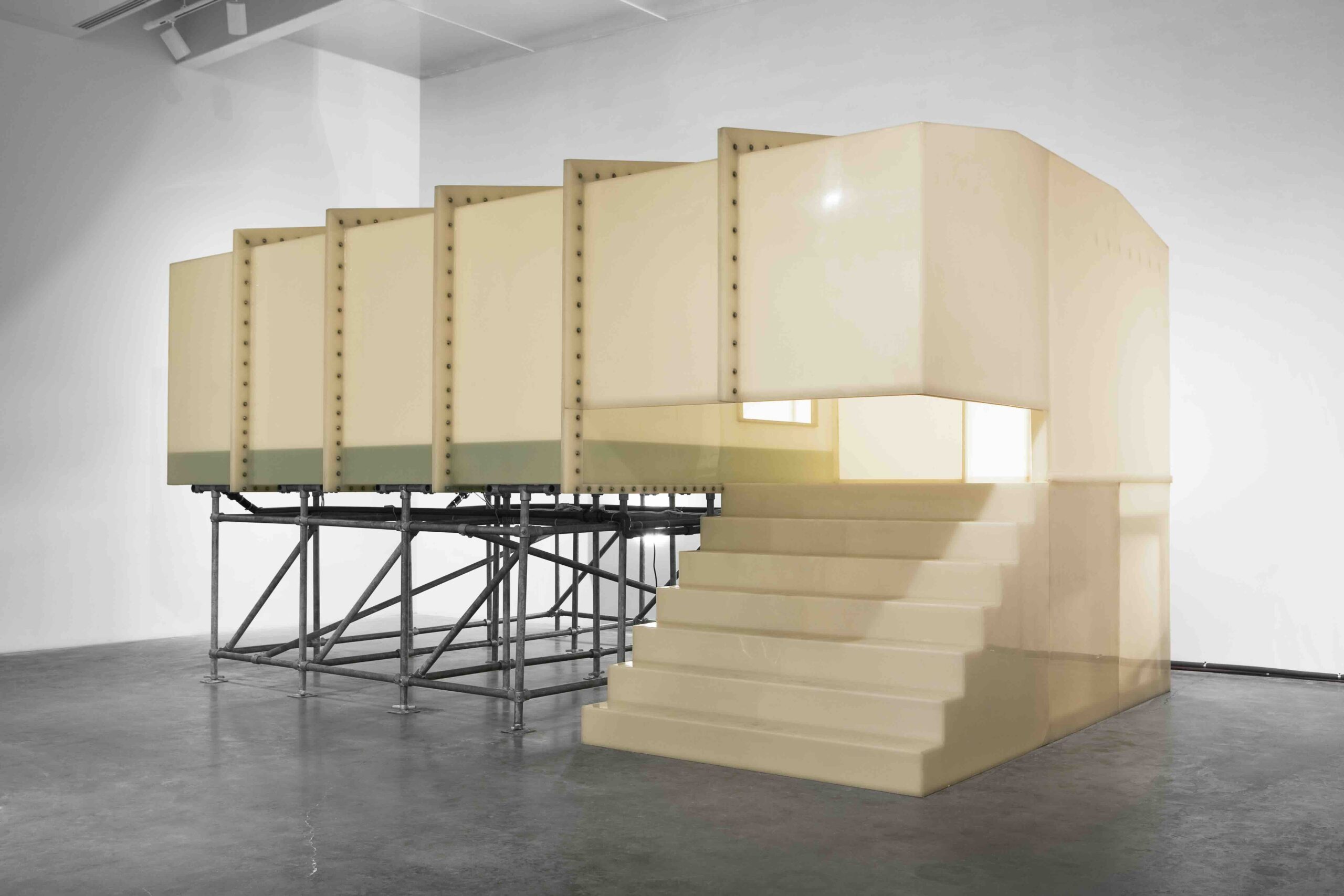
[…]
HUO And that leads us to The Brutalist Kitchen Manifesto. There are many artistic manifestos throughout art history.
CH I’ll give you a wonderful book, do you know it? It’s called 100 Artist Manifestos, by Alex Danchev.
HUO It’s a wonderful book, and they are public declarations of intentions, motives. Often they are collective movements, group manifestos. They often deal with issues and topics outside of art. Freedom or revolution often play a role. But this is not a group manifesto; can you tell a bit about how The Brutalist Kitchen Manifesto came about, what triggered it, and what it contains?
CH There are only a very few manifestos for the kitchen. There are the fantastic books by Jean Anthelme Brillat-Savarin; you could say it’s a kind of manifesto because it somehow solidifies things. In my case, it came out of a necessity, namely the conviction that it’s just wrong to go to restaurants all the time where chefs try to combine ingredients to create something greater than the ingredient itself. That cannot be right, especially as the sole approach. If done occasionally, no problem, or even primarily, but if I find something I really want to eat, something with a certain freshness or something that is just coming into season at the moment, like asparagus, then I want to eat that without drowning it in sauces because it doesn’t make it better; cleanness and singularity of the ingredient makes it stronger, it amplifies the experience, and all its nuances. This omnipresent attitude in today’s kitchens, that ingredients should be matched, needs to be opposed. Let’s try to cook with the product itself. I don’t understand why no one else seems to have thought of it. It’s not a particularly difficult idea, maybe a bit challenging for chefs to implement, but you find certain kitchens in Italy or Japan, and also in Spain, that go in this direction. You see dishes that are either truly brutalist or semi-brutalist. But now in Sweden, where I live when I’m not in Ghana, I see a clear trend towards more and more different ingredients on a plate. Sometimes I can hardly recognise what I ordered because it’s so covered by many other things on top. The main idea is to say that the Brutalist Kitchen is about product purity. Each ingredient is prepared individually. You have a specific product, and you can then divide it into different parts and create something from it. When I wrote this manifesto, I just thought it was important to write it, and shortly thereafter, I was with one of the best chefs in Sweden, Stefan Eriksson, and told him about it. I saw how the idea impressed him, he had never thought that way. When I told him that the manifesto mainly consists of the idea of cooking each ingredient separately and only adding water and salt, I saw how it really clicked in his brain. He was stuck in his thoughts, which were, of course, “How do I do that?”.
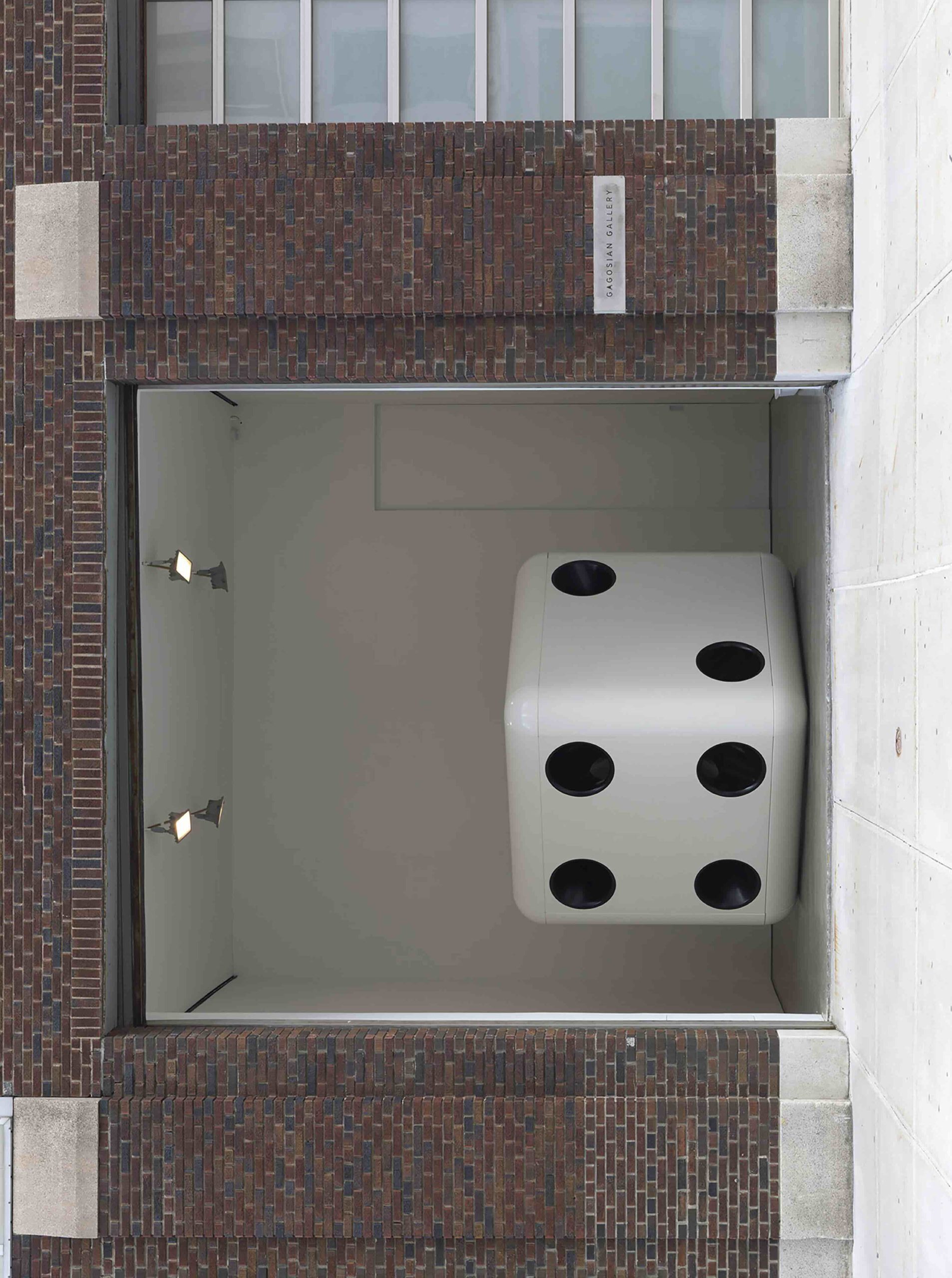
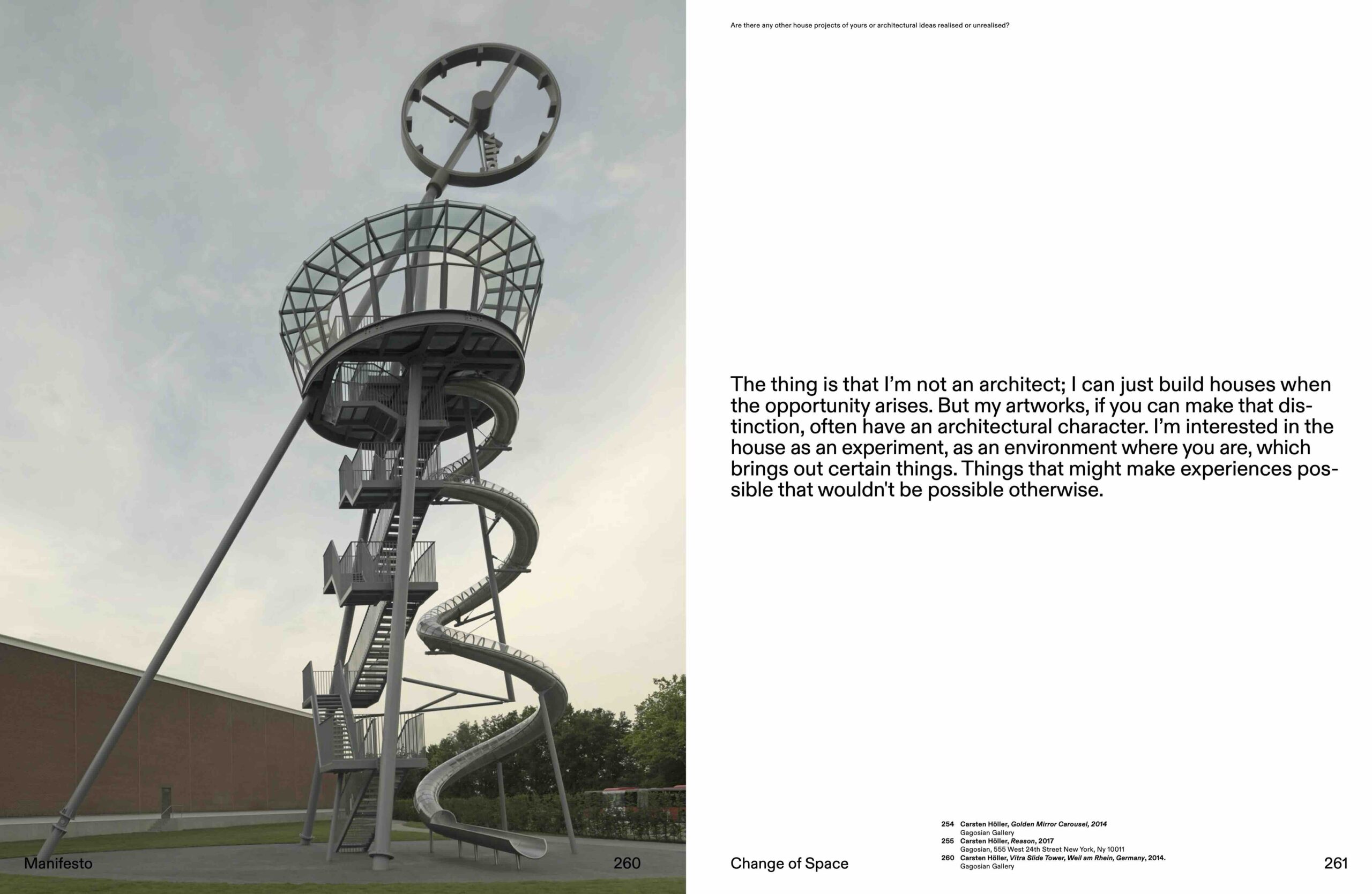
HUO It’s actually not a master plan where you follow a recipe. It’s not like there’s a master plan in The Brutalist Kitchen Manifesto; it’s the ingredients you find that determine what happens in the end, right?
CH Yes. And when you apply that principle to a restaurant, you can certainly look for specific ingredients and have ingredients that maybe no one has eaten before. We recently had beaver, which not many people are familiar with, and that’s certainly interesting. You get a new taste, but why complicate this new taste with various seasoned sauces? You want to know how beaver tastes if you’ve never eaten it before. So we did beaver in its sauce. I’m grateful that Fergus Henderson coined the expression nose-to- tail eating because that is also the Brutalist Kitchen in the sense of taking everything from the product: everything is used and everything is then composed into a dish, deconstructed and reassembled, where the flavour is extracted in such a way that you think, “I’ve never tasted it like this before”.
HUO And another important point is that, today we can record and reproduce almost everything digitally, but not this sense of taste. If we’re now having a great meal, it can’t be reproduced, and it can’t be saved or stored.
CH You can’t save it, no. Taste is a fleeting moment, which is in its nature. It’s really just a brief, short experience, because if it wouldn’t be, it would drive us mad. Good Brutalist Architecture is something I like. But you actually wonder why it’s called Brutalist. It could have been named differently. It’s just that this prefix is very good in the sense that it creates a kind of attention. When you say Brutalist music, art, fashion, sports, politics, you immediately think about something, even though it doesn’t exist; it’s simply the combination of two words. And Brutalist cuisine, you also immediately think about something; but what? There’s a vacuum to be filled. Brutalist architecture refrains from decoration, it’s linear, and it’s blockish. It is essentially essentialist. All of that fits well with the concept of Brutalist cuisine, which also is essentialist in nature. Like Brutalist Architecture wants to go back to the essence of architecture, Brutalist Cuisine wants to go back to the essence of the ingredient.
HUO It’s also about hectares and comfort, so work concrete and concrete are the main materials of Brutalism. In this sense, the question arises of sustainability.
CH Brutalist Cuisine is naturally sustainable, because it has an interesting side effect. Look at the famous Nordic cuisine, which uses products from the proximity of the restaurant. There are places that only cook with things produced within 50 kilometres, with the idea that transport routes are reduced and that the whole production process becomes more sustainable. What is not considered is that a number of different ingredients are chosen for making dishes that are non-brutalist. Even if they are all produced within 50 kilometres of the restaurant, they all have to be transported there, so that adds up. The side effect of sustainability in Brutalist Cuisine is, when you only have a single product, you only have one transport to make. It is therefore the most sustainable cuisine in the world.
Read the full interview on Muse September Issue 62.
